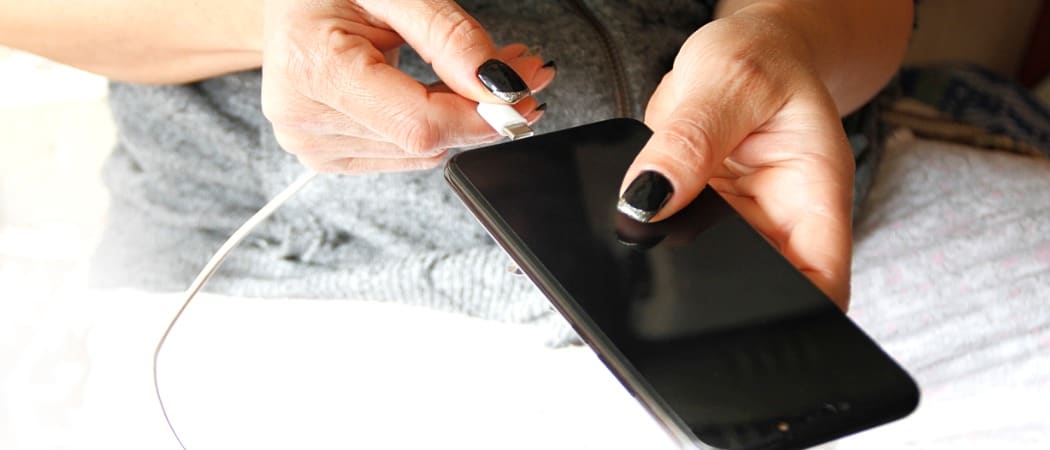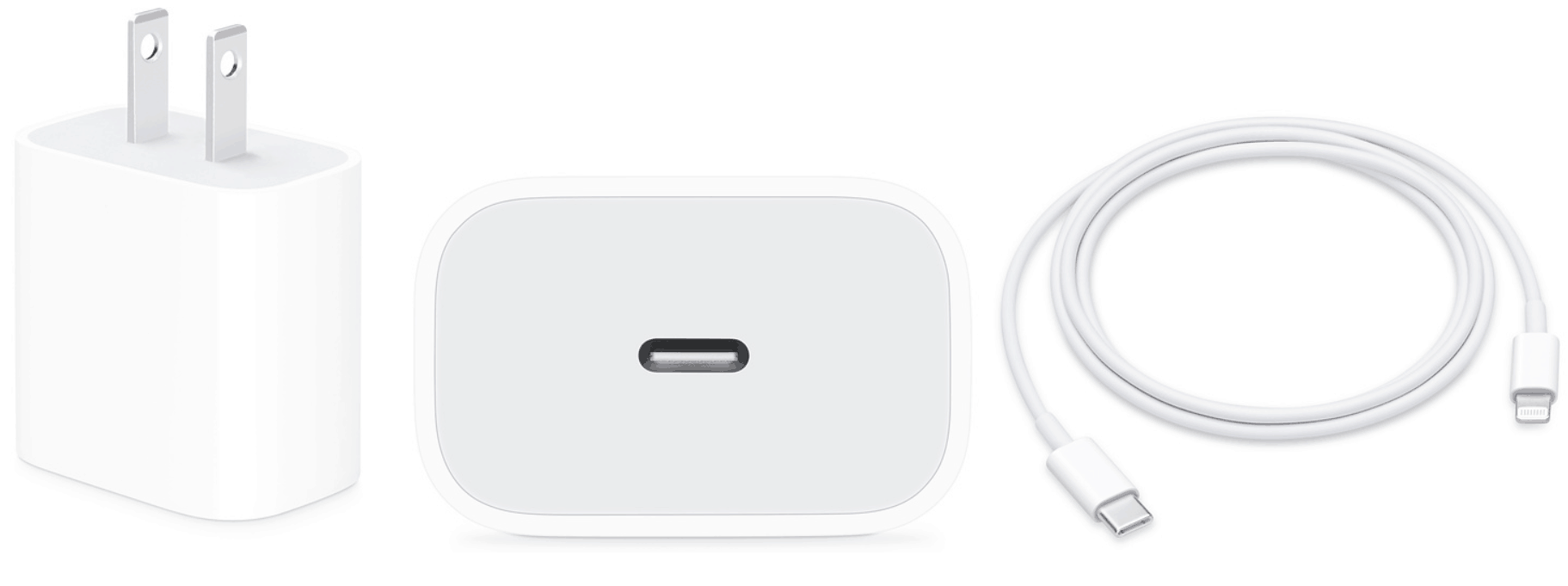What is Fast Charging and Why Does it Matter?

There are several types of Fast or Quick Charging technology allows you to power up your phone in a short amount of time. Here’s what you need to know.
If you’ve been in the market for a smartphone in the past few years, you’ve almost certainly heard the term fast charging. You probably didn’t know that fast charging is a mostly generic term that means slightly different things depending on the vendor since there’s no industry standard. In this article, you’ll learn more about fast charging, what it does, and why it matters.
A Brief History
Before looking at fast charging, it’s important to note where we’ve been in terms of smartphone charging over the years. Until recently, most mobile devices relied on the 5 Watts charging standard and, therefore, shipped with 5W-only adapters. Samsung was one of the first vendors to move beyond this, although others lagged for some time.
Apple, for example, only switched to 18W adapters, beginning with the iPhone 11 Pro and iPhone 11 Pro Max. Other models, including the iPhone 11, continue to ship with a 5W adapter.
When it comes to the output of a power charge, there’s the current and voltage. The former (also called the amperage) is the amount of electricity that flows from the battery to the connected device. Voltage, by contrast, is the strength of that current. Wattage measures the total power, which consists of the amps multiplied by the volts.
Fast Charging
Because there’s no standard for fast charging, manufacturers have developed different ways to make a device charge faster. The companies either increase the current or vary the voltage to increase the potential energy going to a device. For most companies, this has meant varying the voltage versus boosting the current.
Typical device charging comprises of 5 volts and 2.4 amperages, or 5V/2.4A. Fast charging, by contrast, pushes the voltage up by intervals of 5V, 9V, 12V, or more, with amperage increasing to 3A and beyond.
Charge Percentage and Time
When looking into fast charging for specific devices, note that companies typically mention a charging percentage and time. The combination tells you what portion of the total power for a device gets reached over a short period. Usually, you’ll see how quickly a specific adapter can achieve a 50 percent charge, although this does vary.
For example, Apple says the iPhone 11 Pro can achieve a 50 percent charge in 30 minutes with an 18W adapter and a 50 percent charge in 35 minutes with the same adapter on the iPhone 11 Pro Max. Samsung promises similar numbers with most of its handsets.
Compatibility
Again, remember there’s no central fast charging standard! For fast charging to work, you need a device that supports at least one of the available protocols and also an adapter and cable that supports it. Otherwise, your device will default to the old 5V/2.4A standard for charging.
Types of Fast Charging
There are many fast charging types available for mobile device manufacturers, including those mentioned below.
Quick Charge
Qualcomm’s Quick Charge is the most common fast-charging standard simply because lots of companies use Qualcomm chipsets. Quick Charge 2 provides an increase in voltage at intervals of 5V, 9V, and 12V. Quick Charge 3 increased voltage anywhere from 3.2V to 20V. Both Quick Charge 2 and Quick 3 provide peak power of 18W. Quick Charge 4/4+, Qualcomm’s latest version, increases the available amperage while narrowing the voltage range.
You’ll see Qualcomm Quick Charge on devices from LG, Razer, Xiaomi, among others. Belkin, and many others, offer Quick Charge-supported chargers.
Adaptive Fast Charging
Samsung Adaptive Fast Charging, by contrast, is found on most current-generation Samsung devices and uses a variance of Qualcomm’s Quick Charge 2.0 (QC2.0) protocol. Once again, it relies on increasing the available voltage or amperage. You can find Adaptive Fast Charging on the Galaxy Note10, Note10+, Fold, S10e, S10, S10+, Note9, S9, S9+, Note8, S8, S8+, S7, S7 edge, Note5, S6, S6+, and S6 edge. It’s compatible with the company’s range of fast charging chargers.
Apple Fast Charging
Going back to the iPhone 8, Apple handsets also support fast charging. However, only the iPhone 11 Pro and iPhone 11 Pro Max come with a fast charger. The iPhone 8, iPhone 8 Plus, iPhone X, iPhone XS, iPhone XS Max, iPhone XR, iPhone 11 support fast charging, but you’ll need to purchase a separate adapter (and cable) to use it.
Using the Apple USB-C to Lightning cable, you can fast-charge your iPhone up to 50 percent in 30 minutes, as long as you use one of these adapters:
- Apple 18W, 29W, 30W, 61W, or 87W USB-C Power Adapter
- A comparable third-party USB-C power adapter that supports USB Power Delivery (USB-PD)


Pump Express
MediaTek Pump Express is another fast-charging standard. In this case, it relies on varying voltage while also bumping up the current. Smartphones using Pump Express include some from Xiaomi, Motorola, Nokia, and others.
Other Solutions
Meanwhile, there’s USB Power Delivery, a near-universal charging standard for a range of products, not just smartphones. With USB Power Delivery, a USB connection provides more power.
Other fast charging standards include Oppo Super VOOC Flash Charge, OnePlus Dash Charging, and Huawei SuperCharge. Each requires a smartphone from the same company. Both the Oppo and OnePlus standard increases the current rather than the voltage, while Huawei’s technology varies the voltage and amperage.
Finally, there’s Anker Power IQ, which takes a different approach to fast charging in that it’s compatible with many of the others. In doing so, Anker offers supported products that operate using a single USB-C port. Doing so can adjust the voltage output based on the fast charging technology backed by the connected device.
Wireless Fast Charging
One would be incorrect in assuming that wireless fast charging is better than regular fast charging. At least for now, wireless fast charging is slow by comparison because most wireless chargers don’t have cooling systems. In 2020, think of wireless charging more as a convenience than a fast solution, though this should change with time as wireless technology improves.
Fast Charging and Battery Life
Regardless of the protocol, fast charging works in two phases. The first has to do with the buzz-worthy charge percentage mentioned above. During this time, your device will receive a blast of voltage to an empty or near-empty battery. The blast, in most cases, charges the battery to at least 50 percent in just a few minutes. This quick charge is why fast charging has become so popular with mobile device owners.
The second phase of fast charging is much slower and deliberate to give the battery time to absorb a charge. Over the long term, this type of system is supposed to increase battery life by helping it avoid issues such as overheating, shorts, and other problems.
What to Look For
With so many available fast-charging protocols but no universal standard, you might think it would be challenging to find the correct combination of device, adapter, and cable for your situation. Thankfully, that isn’t the case.
Today’s adapter manufacturers market their products to specific customers. As a result, finding the right product for your smartphone or other mobile device is as simple as reading the label. Companies like Anker, Belkin, Aukey, and many others, for example, provide fast-charging products that support various standards. Available fast-charging products include power banks, wall chargers, auto chargers, cables, and more.


Should There Be A Standard?
Manufacturers of smartphones, tablets, and other portable devices might soon be forced to arrive at one standard by the European Union. In doing so, a company like Apple might have to abandon proprietary hardware, which in this case is Lightning. Lawmakers are pushing for a universal cellphone charger, arguing it is more environmentally friendly and more convenient for consumers. Implementing an adapter standard could also have the effect of bringing a fast-charging standard to the market.
Ultimately, I believe the market, not a government body, should determine technology standards. When it comes to fast charging, the market remains fickle and has yet to embrace a standard, and maybe it never will. Stay tuned.






